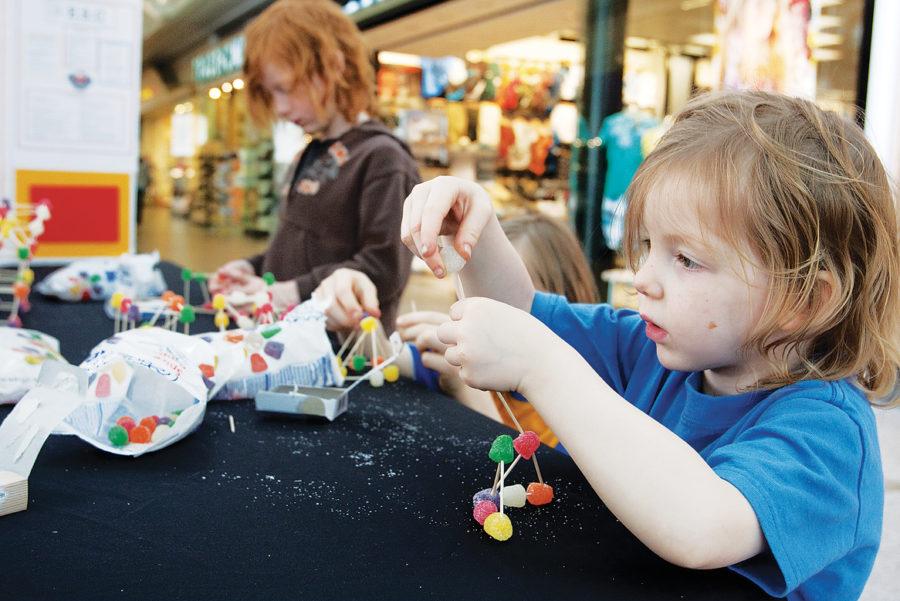American education still admirable
Charley, age three, builds structures out of gum drops and tooth picks with his brothers at the Engineering Student Council’s booth on Saturday. American schools shuffle millions of kids like Charley through its age-old system.
October 24, 2010
The American education system is seen by many as broken. They see an education system that pumps in billions and billions of dollars while churning out an increasingly less intelligent population.
Yet somehow, at the end of the day, we’re still sitting at the top of the world. Let me compare for you what goes on in my home country of South Korea and why the American way — while it may seem flawed — is still the best way to go about things.
South Korea is one of Asia’s wealthier countries. It is not as rich as the United States or Japan, but it is still very well off compared to the rest of the world. There you have 15-year-old public school students ranking third in terms of mathematics performance for countries in the Organisation for Economic Co-Operation and Development, according to the latest assessment by the OECD. The United States? Around 28th. That doesn’t sound too bad until you realize OECD has only 38 member countries.
The OECD is essentially an organization for developed and affluent countries in the world. This means out of 38 industrialized nations, the U.S. is near the bottom in terms of mathematics performance.
The South Korean education system may seem superior for churning out bright students, but it has one huge pitfall. The education system in South Korea is partially responsible for creating a high teen suicide rate. Suicide is considered to be the second leading cause of death for people under 20 in South Korea.
It’s not too hard to imagine. A South Korean high school student may leave home at around 7 a.m. and not come back until 8 or 9 p.m. Sometimes it may be after 1 a.m. That’s because after school ends, they have to attend supplemental instruction centers, something similar to Kaplan in the United States. When they get back, they have to start working on homework as well as study for college entrance exams.
Corporal punishment was allowed in schools until last month when a teacher beating a student was recorded and leaked onto the Internet according to one of South Korea’s major newspapers. I’ve had my fair share as a second-grader in South Korea. As it turns out, I learned from my mother that Korean teachers are often bribed by families to not beat their kids. The less money a family gives to a teacher, the more beatings a kid gets.
Because there’s a great amount of pressure for South Korean students to get into a good college based around the capital, Seoul, some students actually commit suicide after they take their entrance exam for fear that they might have failed it or gotten into a lower tier college. The mentioned Korea Times article lists the under-20 suicide rate to be around 12 percent.
It gets even worse. Because there are so many highly educated students, a lot of graduates end up becoming underemployed. So it’s not uncommon for a college graduate to work in a blue collar job.
If you ever wonder why you see lots of foreigners cycling into the American education system, it is because of the harshness and broken system of their country of origin. My family actually came here because they decided that they didn’t want me to be subjected to such a harsh and unfair lifestyle.
Sure, the American education system might appear to be broken, but I think most Americans think that way only because they don’t have an international perspective on what politics is like in the rest of the world. Everything is broken in some form or another, but all it needs is a slight readjustment to get it back on track if something seems to be a little off.

















